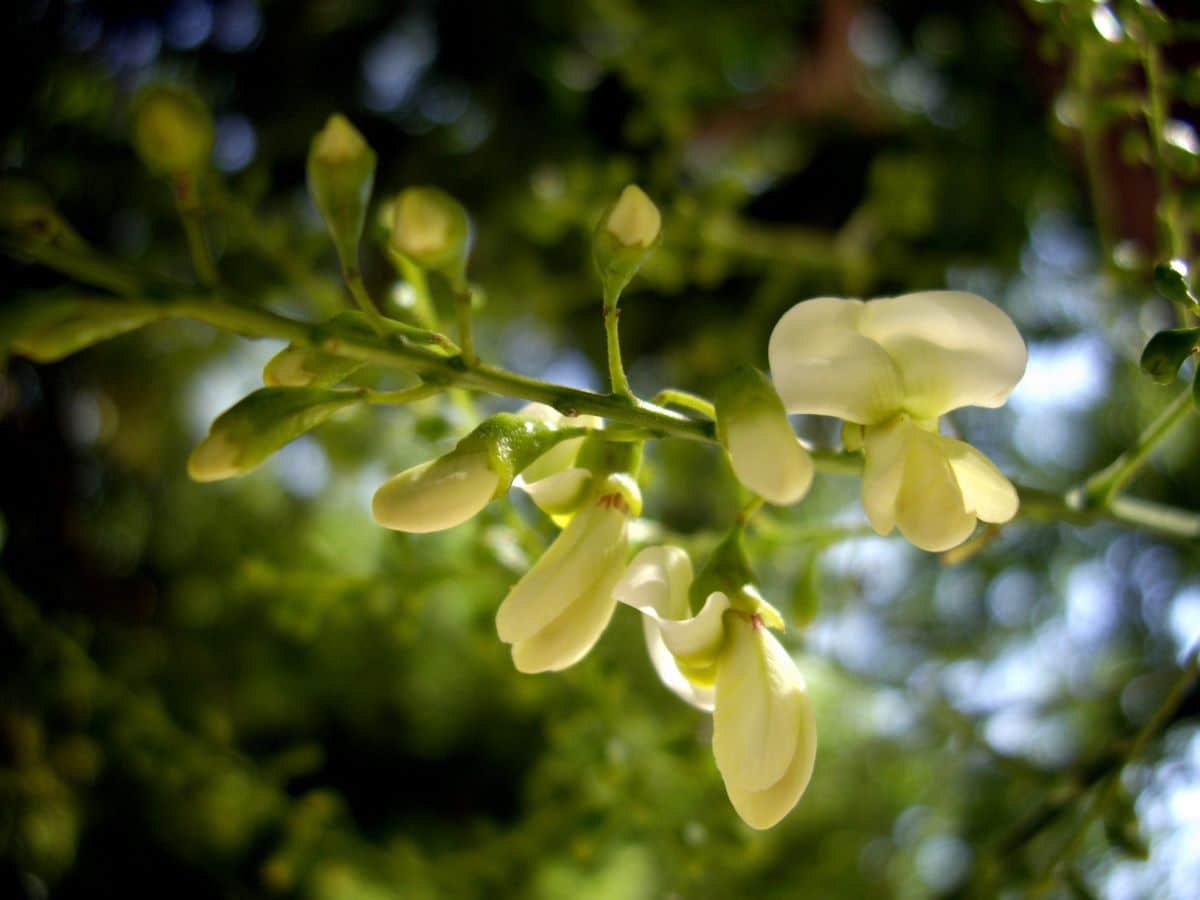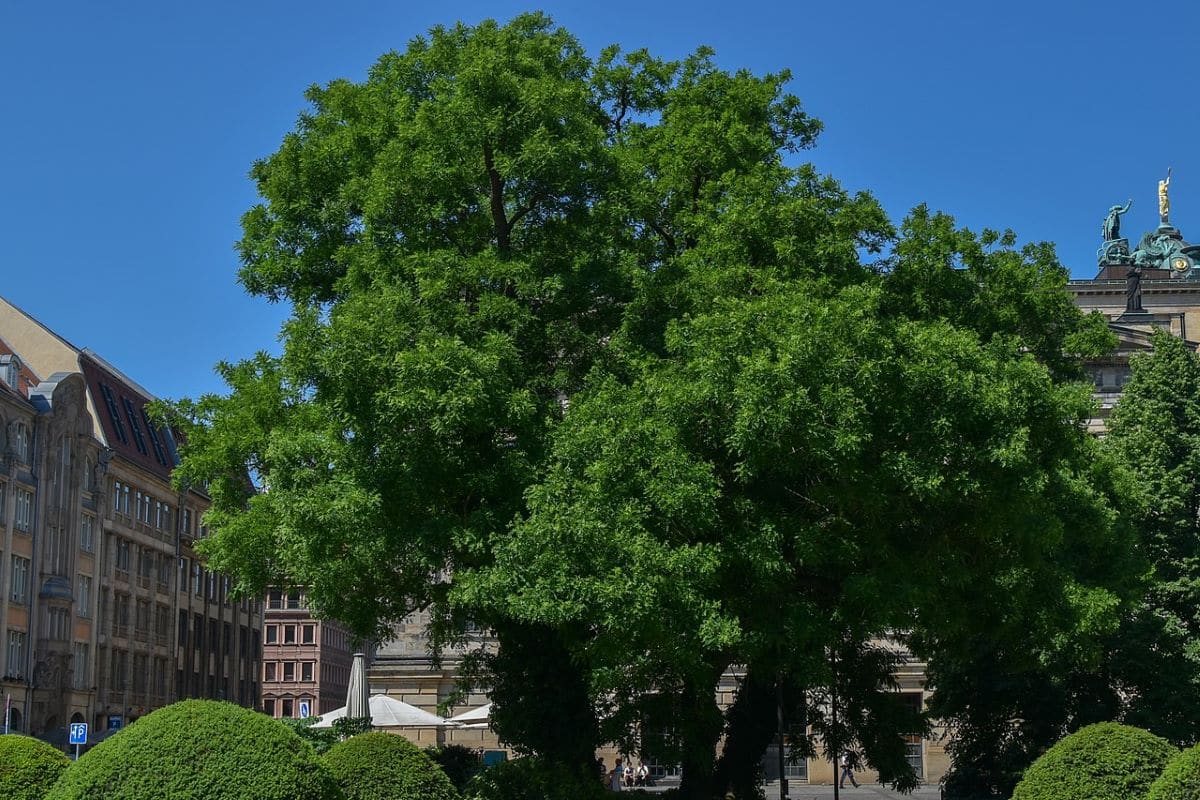
Image – Flickr/sandro bisotti
La Sophora japonica It is one of the most interesting trees native to Japan. And it is that unlike the Japanese maple for example, which can only be grown in a very specific land, our protagonist is not so demanding. In fact, if what you want is to have a Japanese garden in alkaline soil, this species is one that should not be missing.
Although one of the names by which it is known is Japanese acacia, it is actually it has nothing to do with the trees of the genus Acacia. It neither grows fast, nor does it have yellow pom-pom shaped flowers. But don't worry, it has many other qualities.
Origin and characteristics of Sophora japonica
Known as Japanese acacia, pagoda tree or simply sophora, this is a deciduous tree whose scientific name is Styphnolobium japonicum. As a synonym it has Sophora japonica, But it was discovered that, unlike the Sophora, our protagonist is not capable of fixing nitrogen in the soil because it does not establish symbiotic relationships with the bacteria that is responsible for it, the Rhizobia.
Grows to a height of 5 to 10 meters, and is native to East Asia. It has a trunk that is straight at first but becomes twisted over the years, and a very branched crown from which green odd-pinnate leaves sprout.
When does the bloom Sophora japonica?

Image - Flickr / Salomé Bielsa
Its flowers bloom in summer. And they do it by grouping themselves in large panicles, up to 25 centimeters. Their color is white and they emit a very pleasant aroma. These are hermaphroditic, which means that they do not depend on pollinators to produce fruit.
Said fruit is a legume 3-6 centimeters long, green at first but reddish when ripe; inside it contains dark brown seeds. They have the peculiarity that they remain in the tree for several months, until the beginning of winter.
Are their roots invasive?
Before planting it in the ground, it is important to clarify this point, otherwise in the future we could have problems with the plant. Well, like all leguminous trees (that is, of the Fabaceae family), the sophora has very long and strong roots; not as much as those of the Ficus, yes, but equally it must be planted as far as possible from pipes and houses.
The recommended distance is at least five meters, although it is preferable that it be double especially if the ground is soft. Now, one way to control its growth without damaging the natural structure of the tree is to dig a hole of at least 1 x 1 meter, and cover its sides with an anti-rhizome cloth, or even with concrete blocks.
Care and cultivation of Sophora japonica
The sophora is a tree with great ornamental value, so it is not surprising that it is grown in gardens. But how should it be taken care of? How often to water? Does it withstand drought? We will talk about these and other topics below:
Location
Almost always when we grow trees originating from Japan we will have to place them outside. To our protagonist too, not only because he far exceeds the height of a house, but because in order to survive and grow in conditions he needs to feel the passing of the seasons.
For this reason, also not recommended to have in tropical or subtropical climates, where temperatures remain stable throughout the year.
Earth

Image – Wikimedia/Mirgolth // Sophora japonica 'Pendula'
It is not a demanding plant, but if we want to have it in a pot, yes, we must choose a substrate that does not get waterlogged easily because this way we will prevent the roots from dying by suffocation. For example, a 30% perlite mulch mix will work well. But beware: the container must also have drainage holes, otherwise no matter how good the substrate is, we will run the risk of being left without a tree.
In case we are going to plant it in the ground, it is important that the water drains well. If it is poor in nutrients, we do not have to worry too much, since this is solved with the subscriber.
Irrigation
Irrigation will be moderate. If we have it in a pot, we will water an average of 2 times a week during the summer season, but the rest of the year and if it rains regularly, we will not need to water so often. In any case, whenever doubts arise, the best thing we can do is check if the substrate is wet or dry, for example by weighing the pot just after watering and again after a few days.
If it is in the garden, we can water it between one and two times a week during the first two years. From the third it is likely that it will have rooted well, so if we live in an area where it usually rains regularly, it will not be necessary to water it more than once in a while.
Subscriber
The subscriber consists of throwing, for example, manure or guano (on sale here) during the spring and summer, so that it grows at its maximum speed and above all it can be well, healthy, with enough energy to flourish each season. For this reason, it is highly recommended to always pay it, but especially while it is young.
Thus, it is helped to grow, but also to better resist the attack of pests and infections. Therefore, in addition to those mentioned, there are others that will also work, such as compost that you can make yourself, egg shells, or algae extract fertilizer (for sale here).
Multiplication

Image - Wikimedia / Philmarin
La Sophora japonica multiplies by seeds in spring. The fastest way to get them to germinate is by doing the following:
- First, pour water into a glass and put it in the microwave for a few seconds, until you see that the liquid begins to boil.
- Then, take it out and put the seeds in a small strainer (it must fit in the glass).
- Then dip the strainer into the glass for a second.
- Next, put the seeds in another glass containing water at room temperature where you will have them for 24 hours.
- After those hours, plant them in forestry trays or in individual pots with soil for seedbeds or vermiculite, for example.
- Sprinkle some powdered copper or sulfur on them so the fungus doesn't damage them, and place the tray outside in a sunny spot.
Plagues and diseases
It is a plant that does not usually have pests. maybe some cochineal o aphid if the environment is very hot and dry, but nothing to worry about. On the other hand, if we talk about diseases, there are some that are serious, such as root rot that appears when it grows in heavy and compact soils, and/or when it is over-watered; and the bark cankers that appear on the trunk as a result of infections transmitted by fungi, caused by pruning wounds.
to prevent them the ideal is not to prune the tree, and if it is done, use disinfected tools and avoid drastic pruning. If there are symptoms, such as the rapid yellowing or browning of the leaves -without being autumn- and their subsequent fall, and/or the appearance of lumps on the trunk, it can be treated with fungicides that contain copper, such as this.
Rusticity
It resists very well the frosts of up to -25ºC once adult. But it vegetates best in areas where the climate is a bit milder.

Image – Wikimedia/Anastasia Steiner
What did you think of the sophora? You like?